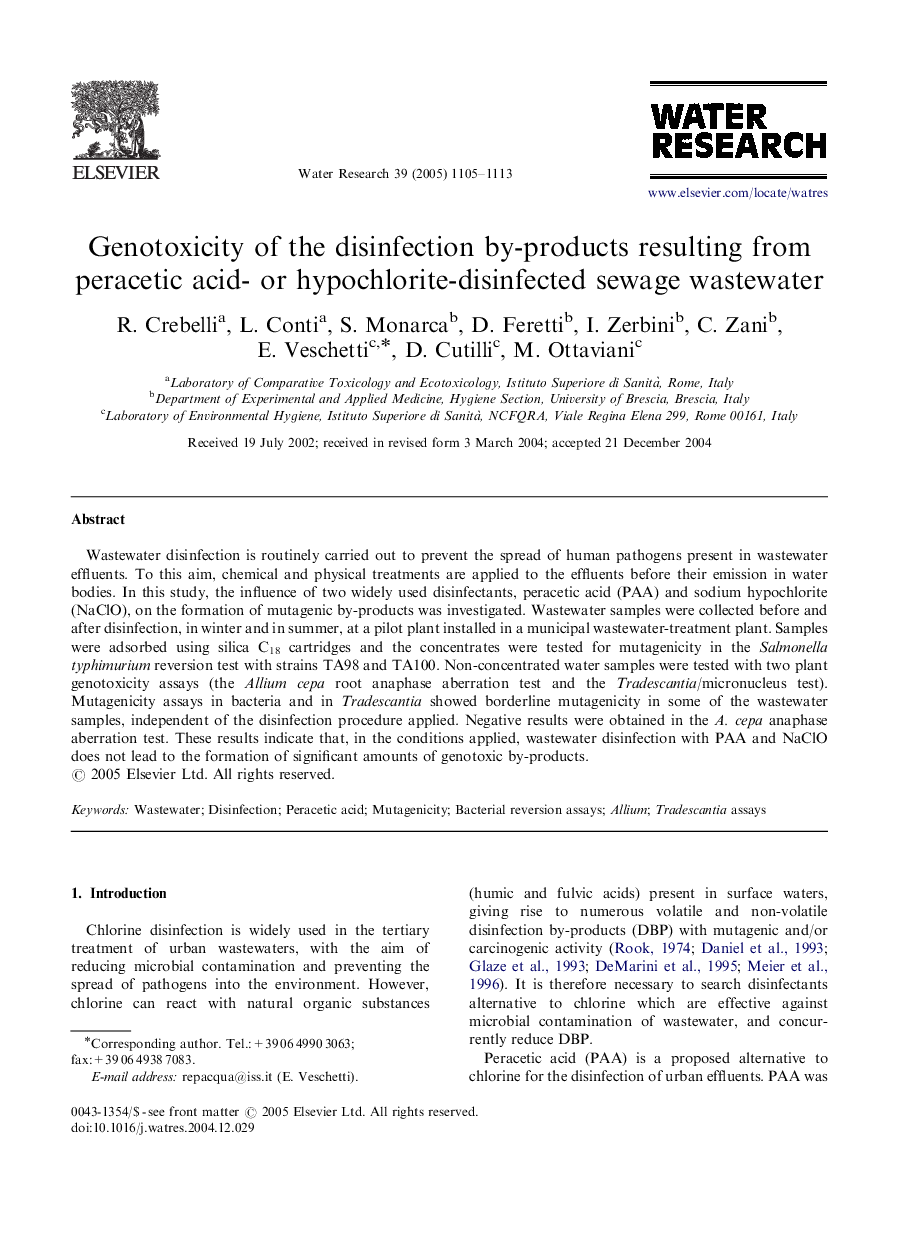| Article ID | Journal | Published Year | Pages | File Type |
|---|---|---|---|---|
| 9468233 | Water Research | 2005 | 9 Pages |
Abstract
Wastewater disinfection is routinely carried out to prevent the spread of human pathogens present in wastewater effluents. To this aim, chemical and physical treatments are applied to the effluents before their emission in water bodies. In this study, the influence of two widely used disinfectants, peracetic acid (PAA) and sodium hypochlorite (NaClO), on the formation of mutagenic by-products was investigated. Wastewater samples were collected before and after disinfection, in winter and in summer, at a pilot plant installed in a municipal wastewater-treatment plant. Samples were adsorbed using silica C18 cartridges and the concentrates were tested for mutagenicity in the Salmonella typhimurium reversion test with strains TA98 and TA100. Non-concentrated water samples were tested with two plant genotoxicity assays (the Allium cepa root anaphase aberration test and the Tradescantia/micronucleus test). Mutagenicity assays in bacteria and in Tradescantia showed borderline mutagenicity in some of the wastewater samples, independent of the disinfection procedure applied. Negative results were obtained in the A. cepa anaphase aberration test. These results indicate that, in the conditions applied, wastewater disinfection with PAA and NaClO does not lead to the formation of significant amounts of genotoxic by-products.
Related Topics
Physical Sciences and Engineering
Earth and Planetary Sciences
Earth-Surface Processes
Authors
R. Crebelli, L. Conti, S. Monarca, D. Feretti, I. Zerbini, C. Zani, E. Veschetti, D. Cutilli, M. Ottaviani,
